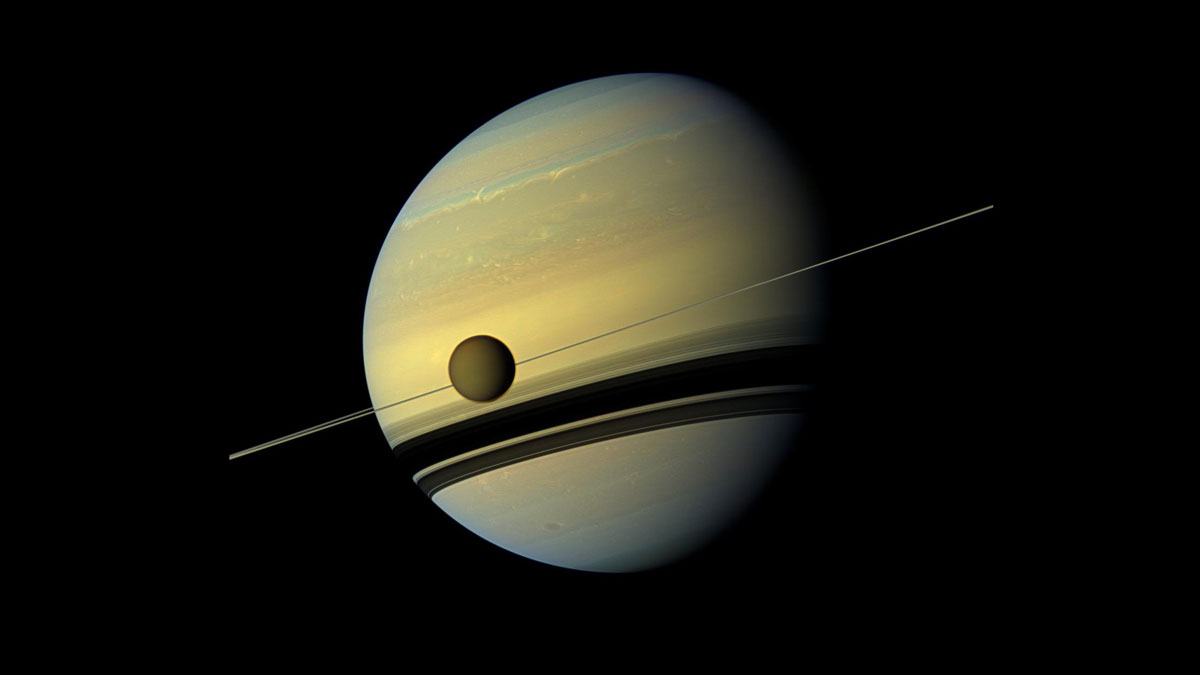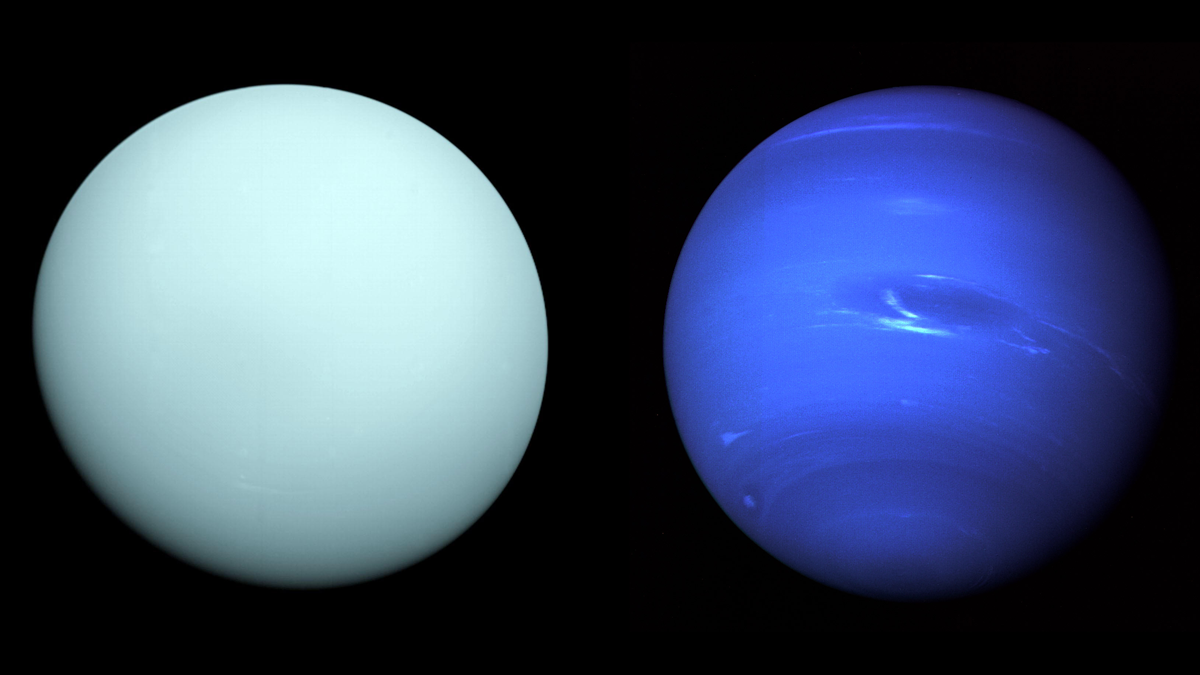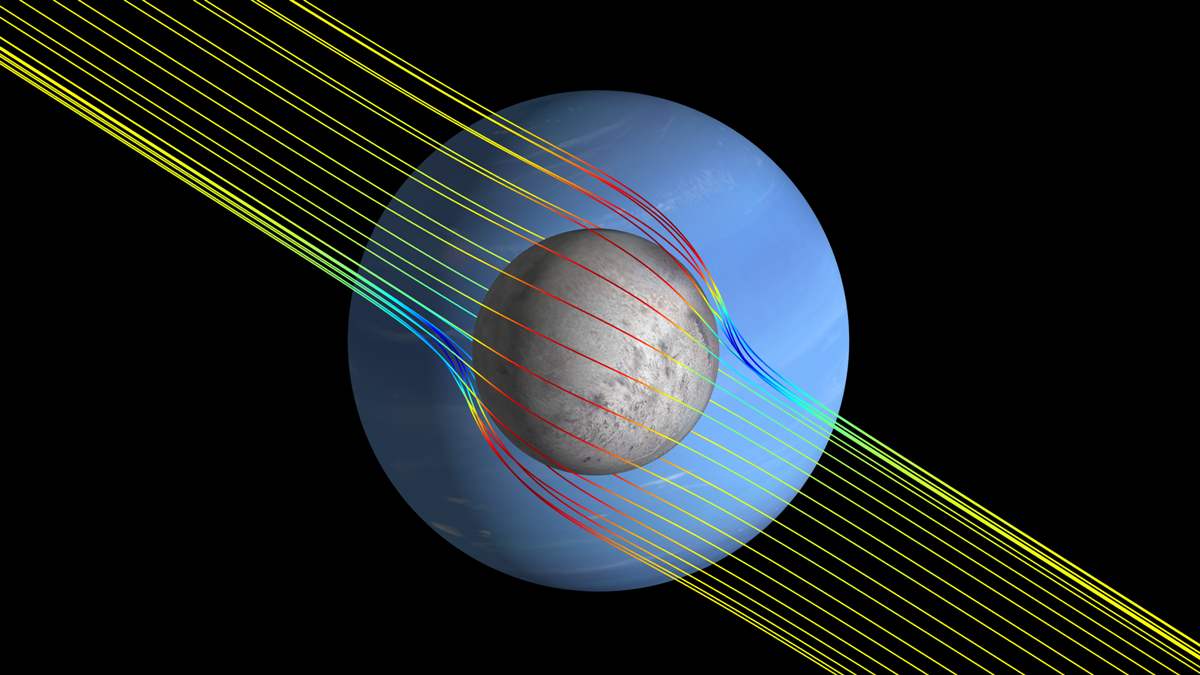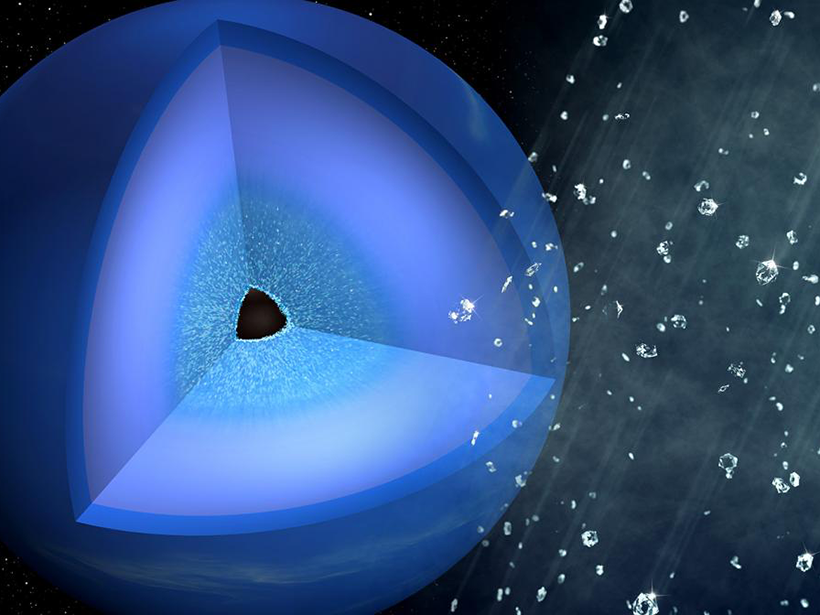The planet’s elusive aurorae are much colder than expected, which is how they evaded detection for so long.
Neptune
Long-Gone Moon Could Explain Birth of Saturn’s Rings
Named Chrysalis, the moon could have disintegrated during a close encounter with the gas giant roughly 100 million years ago.
A Unified Atmospheric Model for Uranus and Neptune
In a new model, three substantial atmospheric layers appear consistent between the ice giants.
Encontrando los océanos ocultos de las lunas usando campos magnéticos inducidos
Un análisis de componentes principales de modelos especulativos puede predecir con más seguridad que las técnicas anteriores la p^ppresencia de un océano subsuperficial en un objeto planetario.
Diagnosing Neptune’s Chilly Summer
A pandemic project analyzing a trove of infrared images revealed an unexplained phenomenon taking place in Neptune’s atmosphere.
Finding Moons’ Hidden Oceans with Induced Magnetic Fields
A principal component analysis of speculative models can more confidently predict the presence of a planetary object’s subsurface ocean than previous techniques.
The Ice Giant Spacecraft of Our Dreams
Scientists imagined some innovative technologies that could enhance a future mission to Uranus or Neptune.
New Tiny Moon of Neptune Discovered
The moon’s size and orbit point to it being the remnant of a collision with Neptune’s moon Proteus.
Uranus and Neptune Should Be Top Priority, Says Report
Voyager 2 visited the ice giants in the 1980s, the only craft ever to do so. Planetary scientists argue that new missions to each planet would also benefit heliophysics and exoplanet research.
Diamonds Really Do Rain on Neptune, Experiments Conclude
Researchers subjected hydrocarbon samples in a laboratory to Neptune-like pressures. The samples, reminiscent of molecules found in the ice giant’s atmosphere, compressed into nanodiamonds.










